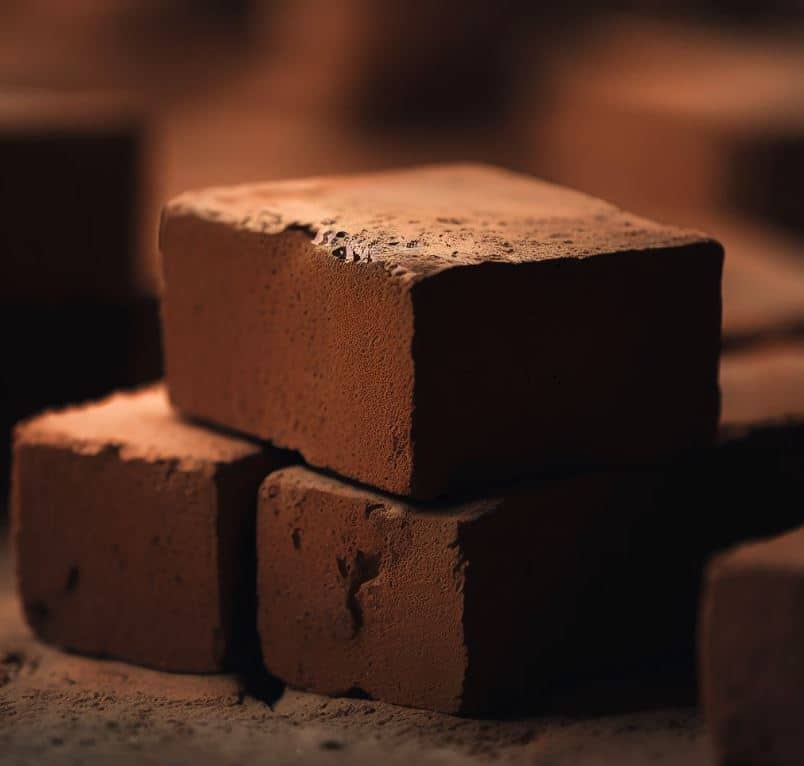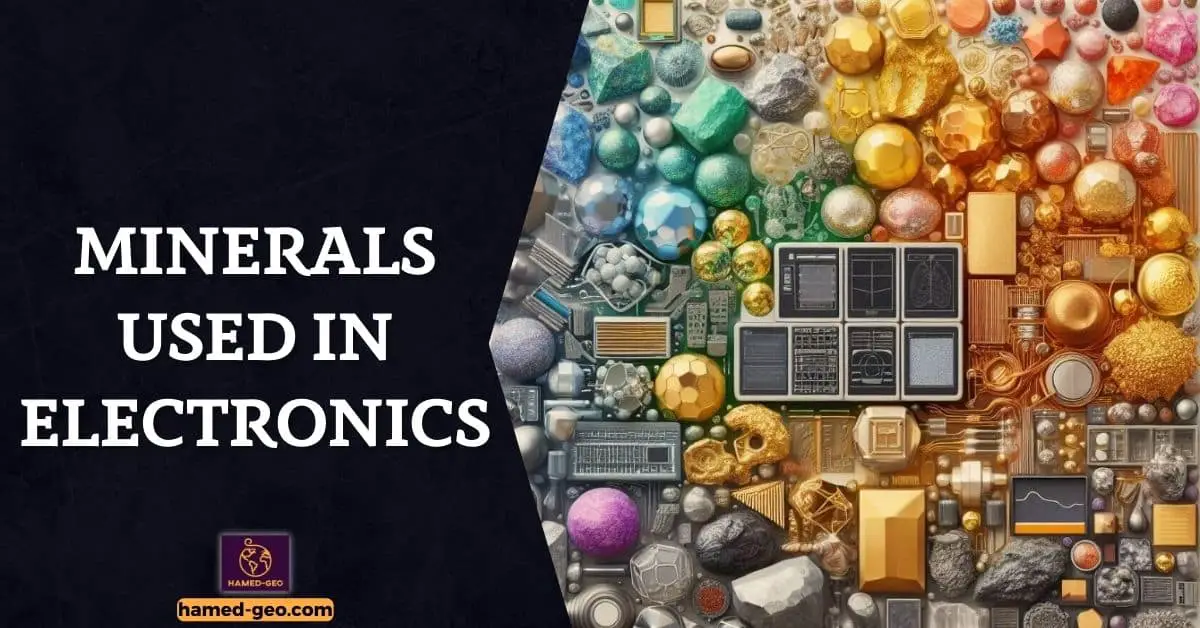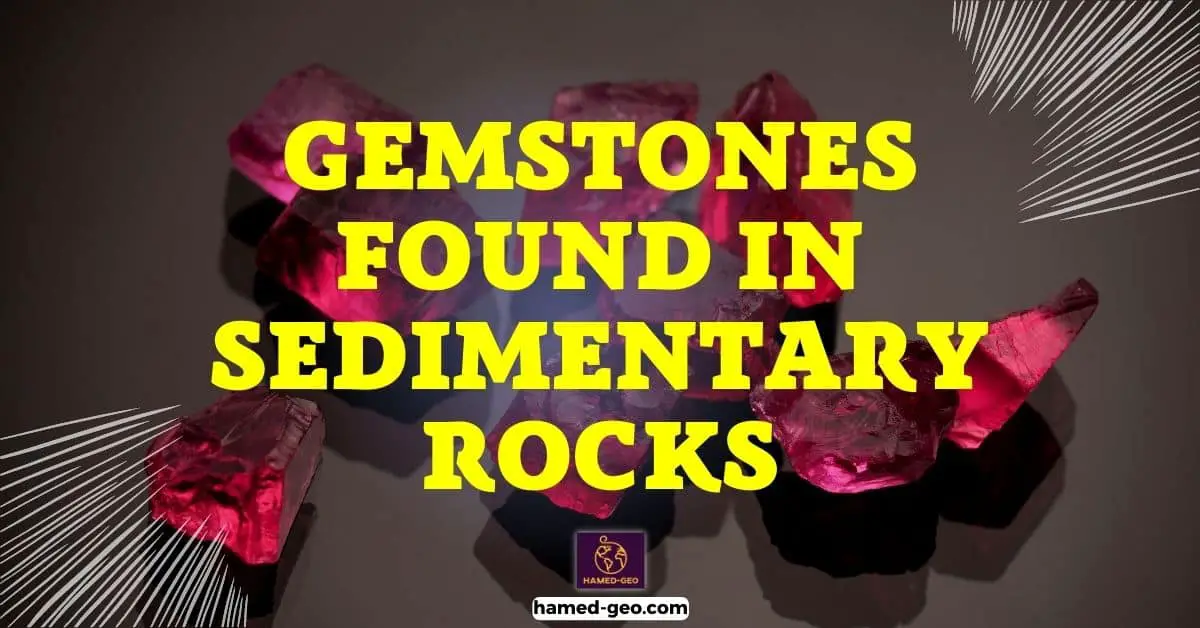Construction is a crucial industry that plays a significant role in shaping the modern world. It involves the creation of infrastructure, buildings, and other structures that are essential for human habitation and the functioning of society. A fundamental aspect of construction is the use of minerals. Minerals are naturally occurring substances that have a crystalline structure and are formed through geological processes. These valuable resources are widely used in the construction industry due to their physical and chemical properties.
Introduction to Minerals Used in Construction
What Are Minerals?
Minerals are naturally occurring inorganic substances that have a definite chemical composition and crystal structure. They are the building blocks of rocks and are found in abundance in the Earth’s crust. There are over 4,000 known minerals, each with its own unique properties and characteristics.
Minerals play a crucial role in various industries, including construction. They are used in the production of building materials such as cement, concrete, and bricks. For example, limestone, a common mineral, is a key component in the production of cement, which is essential for constructing buildings, roads, and bridges.
Minerals also provide structural stability to construction materials. For instance, quartz, a mineral with high hardness and resistance to weathering, is often used as an aggregate in concrete to enhance its strength and durability.
Furthermore, minerals like gypsum and calcite are used in the production of plaster and drywall, providing fire resistance and sound insulation to buildings.
The Importance of Minerals

The importance of minerals in construction cannot be overstated. Minerals play a crucial role in the development and growth of modern infrastructure. They are essential components of various construction materials, such as concrete, asphalt, and bricks, which provide the structural integrity and durability needed for buildings, roads, bridges, and other infrastructure projects.
One of the primary reasons why minerals are highly valued in construction is their strength and resistance to wear and tear. For example, minerals like granite and limestone are commonly used in the production of aggregates for concrete, as they have excellent compressive strength. This allows the concrete to withstand heavy loads and external forces, ensuring the long-term stability of structures.
Moreover, minerals also contribute to the aesthetic appeal of construction projects. Materials such as marble, quartz, and granite are used for their beauty and elegance, enhancing the visual appeal of buildings and interior spaces. These minerals are known for their unique patterns, colors, and textures, making them highly sought after in architectural design.
Common Uses of Minerals in Construction
Minerals play a vital role in the construction industry, providing the necessary raw materials for various building materials. Concrete, one of the most widely used construction materials, relies heavily on minerals such as limestone, clay, and gypsum. Limestone is used as an aggregate in the production of concrete, while clay and gypsum are essential components in the manufacturing of cement.
Another mineral used extensively in construction is sand. Sand is crucial in the production of concrete and mortar, providing the required granular structure and stability. Additionally, sand is used in the production of glass, which finds its application in windows, doors, and other architectural elements.
Granite and marble are popular natural stones used in construction due to their durability and aesthetic appeal. These stones are commonly employed in the construction of countertops, flooring, and decorative features, adding elegance and sophistication to buildings.
Lastly, asphalt, a mixture of aggregates, binders, and fillers, is widely used in road construction.
Aggregates
Aggregates are essential components in construction and civil engineering projects. Understanding the different types of aggregates is crucial for choosing the most suitable material for specific applications. Fine aggregates, such as sand, are commonly used for concrete production, while coarse aggregates, including gravel and crushed stone, provide stability and strength to structures. The uses of aggregates extend beyond construction, with applications in road building, landscaping, and even filtration systems. By considering factors such as size, shape, and composition, engineers can select aggregates that meet the desired specifications for their projects. Overall, aggregates play a vital role in the functionality and durability of various infrastructure projects.
Types of Aggregates
To understand the role of aggregates in construction, it is important to delve into the various types of aggregates used in the industry. Aggregates are categorized into two main types: fine aggregates and coarse aggregates.
Fine aggregates, also known as sand, consist of particles that are smaller than 4.75 millimeters in diameter. They are commonly found in river beds, beaches, and quarries. Fine aggregates are widely used in the production of mortar and concrete, as they provide the necessary strength and workability to these materials. In addition, sand is often utilized in landscaping projects and as a base for paving roads.
On the other hand, coarse aggregates are larger in size, ranging from 4.75 millimeters to 80 millimeters. They can be obtained from natural sources such as crushed stone, gravel, or slag. Coarse aggregates are primarily used in the construction of roads, bridges, and buildings, as they provide stability and strength to the structures.
Uses of Aggregates
Aggregates, a crucial component in construction, are widely utilized for various purposes due to their desirable characteristics. The uses of aggregates are extensive and diverse, making them an indispensable resource in the construction industry.
One of the primary applications of aggregates is in the production of concrete. Aggregates provide bulk to the concrete mixture, reducing the amount of cement required while maintaining its strength and durability. The size and shape of the aggregates significantly influence the properties of concrete, such as workability, strength, and resistance to segregation.
Additionally, aggregates are used as a base material for roads and highways. The stability and strength provided by aggregates create a solid foundation that can withstand heavy traffic loads. Moreover, aggregates are used for drainage systems, preventing water accumulation and potential damage to structures.
In landscaping, aggregates are used to create aesthetically pleasing and low-maintenance surfaces. Whether it is for pathways, driveways, or decorative features, aggregates offer a wide range of colors and textures to enhance the overall appearance of outdoor spaces.
Sand

Sand is a vital natural resource with diverse types and uses. The various types of sand include beach sand, desert sand, and river sand. Each type has distinct characteristics that make it suitable for specific applications. Beach sand, for instance, is commonly used in construction due to its fine particles and high silica content. Desert sand, on the other hand, is not suitable for construction due to its composition of rounded grains. Furthermore, the environmental impact of sand mining is a growing concern. It leads to erosion, loss of biodiversity, and disruption of ecosystems.
Types of Sand
Sand is not just a simple grainy substance found on beaches; it is a diverse material with various types and characteristics. From fine sand to coarse sand, each type has its own unique properties that make it suitable for different applications. The most common type of sand is quartz sand, which is composed of tiny grains of quartz. It is widely used in construction, as it provides stability and strength to concrete and mortar. Silica sand, on the other hand, is known for its high purity and is commonly used in the production of glass and ceramics. Meanwhile, play sand is specially processed to be safe for children to play with, making it a popular choice for sandboxes and playgrounds. Additionally, there are specialized types of sand, such as frac sand used in hydraulic fracturing and desert sand, which is not suitable for construction due to its rounded shape and poor cohesion. Understanding the different types of sand is crucial in choosing the right material for specific applications.
Uses of Sand
Sand is a versatile material that finds its application in various industries due to its unique properties. Its uses span across construction, glass manufacturing, agriculture, and even the entertainment industry.
In the construction sector, sand plays a crucial role in the production of concrete. It acts as a fine aggregate, filling the gaps between larger particles, such as gravel or crushed stone, to create a solid and durable structure. Additionally, sand is used in the production of bricks, mortar, and asphalt.
Glass manufacturing heavily relies on sand as its primary raw material. Silica sand, with its high silica content, is melted at very high temperatures to produce glass. The transparency and strength of glass products are directly influenced by the quality of sand used in its production.
Another significant application of sand is in agriculture. Sand is used as a medium for growing plants in hydroponic systems, where the plants are cultivated without soil. The porous nature of sand allows for proper drainage and aeration, enabling healthy root growth.
Gravel
Gravel, a commonly used construction material, comes in various types, each with unique characteristics. Types of gravel include crushed stone, pea gravel, and bank run gravel, each offering different sizes and textures to suit specific purposes. Uses of gravel range from road construction and landscaping to drainage systems and concrete production. Gravel is also extracted from various sources, such as rivers, quarries, and gravel pits. The extraction of gravel involves the use of heavy machinery and equipment to remove gravel from the earth’s surface, ensuring a steady supply for construction projects.
Types of Gravel
Gravel is a versatile material that comes in various types, each with its unique characteristics and uses. The classification of gravel is based on its size and shape, which determine its suitability for different applications.
1. Crushed Stone Gravel: This type of gravel is produced by crushing larger rocks into smaller pieces. It is commonly used for construction purposes such as road base, concrete aggregate, and drainage systems. Crushed stone gravel provides excellent stability and durability due to its angular shape.
2. Pea Gravel: Pea gravel is characterized by its small, smooth, and rounded stones. It is popular in landscaping projects, as it provides an aesthetically pleasing appearance. Pea gravel is often used for pathways, garden borders, and decorative purposes.
3. River Gravel: As the name suggests, river gravel is sourced from rivers and streams. Its rounded shape and smooth texture make it suitable for decorative purposes, such as in gardens or as a top layer for driveways.
Uses of Gravel
Gravel, one of the most commonly used construction materials, has a wide range of applications due to its versatile nature. Gravel is primarily used as a base material for roads, driveways, and parking lots due to its ability to provide stability and support heavy loads. Its coarse texture allows for better drainage, preventing the accumulation of water on surfaces. Additionally, gravel is often used in the construction of concrete, providing strength and durability. It is also utilized in the manufacturing of asphalt, which is widely used in road construction.
Furthermore, gravel is commonly used in landscaping projects. It can be used to create pathways, enhance the aesthetics of gardens, and prevent erosion. Its natural appearance and various sizes make it a popular choice for decorative purposes.
In the agricultural sector, gravel is used to improve soil drainage and prevent waterlogging, thereby promoting healthy plant growth. It is also utilized in the construction of livestock pens and agricultural roadways.
Extraction of Gravel
Gravel, a mixture of small stones and rock fragments, is an essential material used in various construction projects. To meet the demand for gravel, the extraction process plays a crucial role in ensuring a steady supply. The extraction of gravel involves several steps that vary depending on the location and type of gravel being extracted.
One common method of gravel extraction is through open-pit mining. In this process, large machinery, such as excavators and bulldozers, is used to remove the topsoil and expose the gravel deposit. The gravel is then extracted using heavy-duty equipment, such as crushers and screens, which break down the larger rocks into smaller pieces.
Another method used for gravel extraction is dredging. This process involves the use of suction pumps to remove gravel from riverbeds or the seabed. Dredging is especially useful in areas where the gravel deposit is underwater.
It is important to note that gravel extraction must be done responsibly to minimize environmental impact.
Clay
Clay is a versatile material that has been used for various purposes throughout history. Understanding the different types of clay is essential for determining its best use. There are several types of clay, including kaolin, bentonite, and ball clay, each with distinct properties. Kaolin clay is known for its high plasticity and is commonly used in the production of ceramics and porcelain. On the other hand, bentonite clay is highly absorbent and is often used in industries such as drilling and construction. Ball clay, with its fine particle size, is ideal for pottery and tile production.
Types of Clay
Clay, a natural mineral found in abundance across the globe, is known for its versatility and wide range of applications. In this section, we will explore the various types of clay that exist and their unique characteristics.
Kaolin, also referred to as China clay, is one of the most common types of clay. It is known for its fine particle size and pure white color. Due to its high plasticity and low shrinkage, kaolin is widely used in the production of porcelain, ceramics, and paper.
Bentonite is another significant type of clay that possesses exceptional swelling and water absorption properties. This makes it ideal for applications in the drilling industry, where it is used as a lubricating and sealing agent in oil and gas wells.
Montmorillonite clay, a subtype of bentonite, exhibits a high cation exchange capacity, making it valuable for applications in soil improvement and wastewater treatment. Its ability to retain water and nutrients in the soil enhances plant growth and improves soil structure.
Uses of Clay
Clay, a versatile and abundant natural resource, finds its usefulness in various industries and applications. One of the major uses of clay is in the production of ceramics. Due to its unique plasticity and ability to retain its shape when fired, clay serves as the primary material for creating pottery, tiles, and bricks. The building and construction industry heavily relies on clay products for their durability and aesthetic appeal.
Furthermore, clay’s ability to retain moisture makes it an ideal soil conditioner in agriculture. It helps improve soil structure, retain water, and provide essential nutrients to plants, enhancing crop growth and productivity. Additionally, clay has been used for centuries in cosmetics and skincare products. Its gentle exfoliating properties and ability to absorb excess oil make it a popular ingredient in facial masks, cleansers, and body scrubs.
In wastewater treatment, clay acts as a natural adsorbent, removing impurities and toxins from water.
Clay is a versatile natural resource that has been used by humans for thousands of years. It is a type of fine-grained soil that forms from the weathering of rocks and minerals. There are several different types of clay, each with its own unique properties and uses.
One common type of clay is kaolin clay, also known as china clay. It is a soft, white clay that is often used in the production of ceramics, such as porcelain and fine china. Kaolin clay is valued for its high plasticity, which allows it to be easily molded and shaped. It also has excellent heat resistance, making it ideal for use in the creation of pottery and other ceramic objects.
Another type of clay is bentonite clay, which is formed from the weathering of volcanic ash. Bentonite clay has a high swelling capacity and is often used in the drilling industry as a drilling mud additive. It helps to lubricate and cool the drill bit, as well as to remove cuttings from the well.
Bricks

Bricks are a popular building material due to their durability and versatility. There are various types of bricks available, each with its own characteristics and uses. Facing bricks are commonly used for the exterior walls of buildings, as they are aesthetically pleasing and weather-resistant. Engineering bricks, on the other hand, are designed to withstand high pressure and are often used in the construction of foundations and sewer systems. Bricks can also be used for decorative purposes, such as paving bricks for driveways and fire bricks for fireplaces. Understanding the different types of bricks and their uses is essential for effective construction planning.
Types of Bricks
Bricks are one of the oldest and most commonly used building materials in the world. They are made from clay that has been fired at high temperatures to create a strong and durable product. There are several different types of bricks that are used for various applications in construction.
Common bricks are the most basic type of brick and are commonly used for general construction purposes. They have a standard size and shape, making them easy to work with.
Engineering bricks, on the other hand, are much stronger and more resistant to water and chemicals. They are commonly used in areas where high strength and durability are required, such as foundations and retaining walls.
Facing bricks are designed for their aesthetic appeal. They have a smooth and uniform appearance, making them ideal for use on the exterior of buildings or for decorative purposes.
Fire bricks are specially designed to withstand high temperatures. They are commonly used in fireplaces, furnaces, and kilns.
Uses of Bricks
Bricks have been used for construction purposes for thousands of years due to their durability and versatility. Their uses span across a wide range of applications, making them a fundamental building material in the construction industry.
One of the primary uses of bricks is in the construction of buildings. They are commonly used to create load-bearing walls, providing structural support and stability to the entire structure. Bricks also have excellent thermal properties, which help in regulating the temperature inside a building, making them ideal for insulation purposes.
Additionally, bricks are used extensively in paving projects. They can be laid in various patterns to create visually appealing driveways, walkways, and patios. Due to their strength and resistance to wear and tear, bricks are able to withstand heavy foot traffic and vehicular loads.
Furthermore, bricks find application in the creation of fireplaces and barbecues. The dense nature of bricks allows them to retain heat for extended periods, making them an excellent choice for these purposes.
Cement
Cement is a crucial material in the construction industry, serving as the binding agent in concrete. There are several types of cement available, each with unique properties and suitable applications. For instance, Portland cement is commonly used for general construction, while white cement is preferred for architectural purposes. Additionally, various additives can be incorporated into cement mixtures to enhance specific characteristics, such as strength or durability. Considering the impact of construction on the environment, the sustainability of cement production has become a significant concern. Innovations in cement manufacturing aim to reduce carbon emissions and waste, promoting a more eco-friendly approach to construction.
Types of Cement
Bricks, a widely used building material, often require the use of cement for their construction. Cement, a binder material, is an essential component in the construction industry. There are various types of cement available, each with its own unique properties to cater to different construction needs.
Ordinary Portland Cement (OPC) is the most commonly used type of cement. It is versatile and suitable for various construction purposes such as residential buildings, bridges, and roads. Rapid Hardening Cement (RHC), on the other hand, is used when quick setting and early strength are required, making it ideal for cold weather conditions or urgent repairs.
For specialized projects, Blended Cement is often used. This type of cement is a mixture of OPC and supplementary cementitious materials such as fly ash, slag, or silica fume. It provides enhanced durability, reduced environmental impact, and improved workability.
Another type of cement is White Cement, which is used for decorative purposes due to its aesthetic appeal.
Uses of Cement
Cement, a versatile and widely used construction material, finds its application in various sectors. One of the primary uses of cement is in the construction of buildings and infrastructure. It serves as a binding agent in the production of concrete, which is used for foundations, walls, floors, and other structural elements. Additionally, cement is an essential component in the production of mortar, which is used for masonry work such as bricklaying and plastering.
Furthermore, cement plays a crucial role in the development of transportation infrastructure. It is used in the construction of bridges, highways, airports, and railways, providing the necessary strength and durability to withstand heavy loads and harsh weather conditions.
Cement also finds applications in the manufacturing industry. It is utilized in the production of precast concrete products, such as pipes, poles, and slabs, which are used in various construction projects. Moreover, cement is an integral part of the manufacturing process for products like cement blocks, tiles, and roofing materials.
Gypsum
Gypsum, a mineral composed of calcium sulfate dihydrate, is widely used in various industries. Types of Gypsum include natural gypsum, synthetic gypsum, and FGD gypsum. Natural gypsum is obtained from mines, while synthetic gypsum is a byproduct of various industrial processes. FGD gypsum is produced from flue gas desulfurization in power plants. Uses of Gypsum range from construction materials, such as plaster and drywall, to agricultural applications, like soil amendment and animal bedding. However, it is essential to consider the environmental impact of gypsum production and use.
Types of Gypsum

Gypsum is a mineral that is commonly found in sedimentary rocks. There are several different types of gypsum, each with its own unique characteristics and uses. One of the most common types is selenite gypsum, which forms in transparent and colorless crystals. Selenite gypsum is often used in the production of decorative items such as lamps and vases, as well as in the creation of sculptures and other artistic pieces.
Another type of gypsum is alabaster gypsum, which is a fine-grained and translucent variety. Alabaster gypsum is highly valued for its smooth texture and ability to be carved into intricate designs. It is commonly used in the creation of statues, religious artifacts, and architectural details.
Anhydrite gypsum is a type of gypsum that forms when gypsum is heated to a high temperature and loses its water content. This results in a denser and harder mineral that is often used in the production of cement and as a filler in various industrial applications.
Uses of Gypsum
Gypsum, a versatile mineral, finds application in various industries due to its distinctive properties. One of the primary uses of gypsum is in the construction sector, where it is employed as a binder in the production of plaster of Paris and plasterboard. Plasterboard, commonly known as drywall, is a widely used material for partition walls and ceilings in buildings. Its fire-resistant and soundproofing qualities make it ideal for creating safe and comfortable living spaces. Additionally, gypsum is utilized in agriculture as a soil conditioner to improve soil structure and enhance water retention. This helps in promoting healthy plant growth and increasing crop yields.
Furthermore, gypsum plays a crucial role in the manufacturing of cement, acting as a retarder to control the setting time of the mixture. It also finds application in the production of dental plaster and moldings in the healthcare and art industries, respectively.
Limestone
Limestone is a sedimentary rock that is composed primarily of calcium carbonate. It is one of the most abundant rock types on Earth and has various subtypes, including chalk, coquina, and travertine. Different types of limestone vary in color, texture, and hardness, making them suitable for different applications. Limestone is widely used in construction, as it can be crushed and used as aggregate in concrete and asphalt. It is also used in the production of lime, which is used in industries such as steel, paper, and water treatment. Additionally, limestone is a popular choice for decorative purposes, such as countertops and flooring.
Types of Limestone
Gypsum is an important mineral that is commonly found in sedimentary rock formations. Its unique properties make it a valuable resource in various industries. However, another mineral that is widely used and has its own distinct characteristics is limestone. Limestone is a sedimentary rock composed mainly of calcium carbonate. There are several types of limestone, each with its own unique qualities.
Chalk, one of the most common types, is a soft and porous limestone that is often used in making cement and as a soil conditioner. Marble, on the other hand, is a metamorphic rock that is formed from limestone under high pressure and temperature. This type of limestone is known for its beautiful veining and is often used in construction, sculpture, and decorative purposes. Travertine is another popular type of limestone that is formed from the precipitation of calcium carbonate in hot springs. It is commonly used in flooring and countertops due to its durability and natural beauty.
Uses
Gypsum is a mineral widely known for its uses in construction and agriculture. However, another important mineral that plays a crucial role in various industries is limestone. Limestone is a sedimentary rock composed primarily of calcium carbonate, and it has a wide range of applications due to its unique properties.
Steel
Steel is a versatile material that finds application in various industries due to its unique properties. Types of Steel can be classified based on their composition and properties. Carbon steel is the most common type, known for its strength and durability. Alloy steel contains additional elements to enhance specific characteristics, such as corrosion resistance or high-temperature resistance. Stainless steel is widely used in kitchen and medical equipment due to its excellent corrosion resistance. Uses of steel are diverse, ranging from construction and infrastructure to automotive and manufacturing. Its strength, durability, and malleability make it an ideal choice for a wide range of applications.
Types of Steel
Steel, a versatile and widely used material, comes in various types, each with its own unique properties and applications. One of the most common types is carbon steel, which contains a small percentage of carbon and is known for its strength and durability. It is widely used in construction, automotive manufacturing, and infrastructure development. Another type is stainless steel, which is alloyed with chromium to provide corrosion resistance. This makes it ideal for applications where the material is exposed to moisture or chemicals, such as kitchen appliances, medical equipment, and architectural structures.
Alloy steel is another significant type that contains various alloying elements like manganese, nickel, and chromium. This type offers enhanced strength, toughness, and heat resistance, making it suitable for demanding applications such as aerospace engineering, oil and gas exploration, and heavy machinery manufacturing. Additionally, tool steel is a specialized type known for its hardness and ability to withstand high temperatures. It is commonly used for producing cutting tools, molds, and dies.
Uses
Steel is a versatile material that has a wide range of uses in various industries. Its strength, durability, and resistance to corrosion make it an ideal choice for many applications. One of the most common uses of steel is in the construction industry, where it is used to build structures such as buildings, bridges, and highways. The high tensile strength of steel allows it to withstand heavy loads and harsh weather conditions.
In the automotive industry, steel is used to manufacture car bodies, chassis, and various components. Its ability to absorb and distribute energy makes it an important material for ensuring the safety of vehicles. Steel is also widely used in the manufacturing of household appliances, such as refrigerators, washing machines, and ovens, due to its durability and resistance to heat.
Furthermore, steel is utilized in the energy sector for the construction of power plants, pipelines, and offshore platforms. Its strength and corrosion resistance make it an ideal choice for these demanding applications. Additionally, steel is used in the production of machinery, tools, and equipment across different industries.
In conclusion, minerals play a crucial role in the construction industry as they are essential for the production of various construction materials. Aggregates, including sand and gravel, are widely used for the production of concrete and asphalt, which are the foundation of many structures. Clay is another important mineral used in construction, primarily for making bricks. Bricks are durable, fire-resistant, and provide excellent insulation properties.
The production of cement, an essential component of concrete, relies heavily on the mineral limestone. Limestone is heated and ground to produce the powdered form of cement. Another mineral used in the production of cement is gypsum, which helps regulate the setting time of concrete.
Furthermore, steel is a crucial mineral used in construction due to its high strength and durability. It is used in the construction of buildings, bridges, and infrastructure projects.
Overall, the use of minerals in construction is extensive and indispensable. The availability and quality of these minerals directly impact the construction industry’s ability to meet the demands of infrastructure development.



